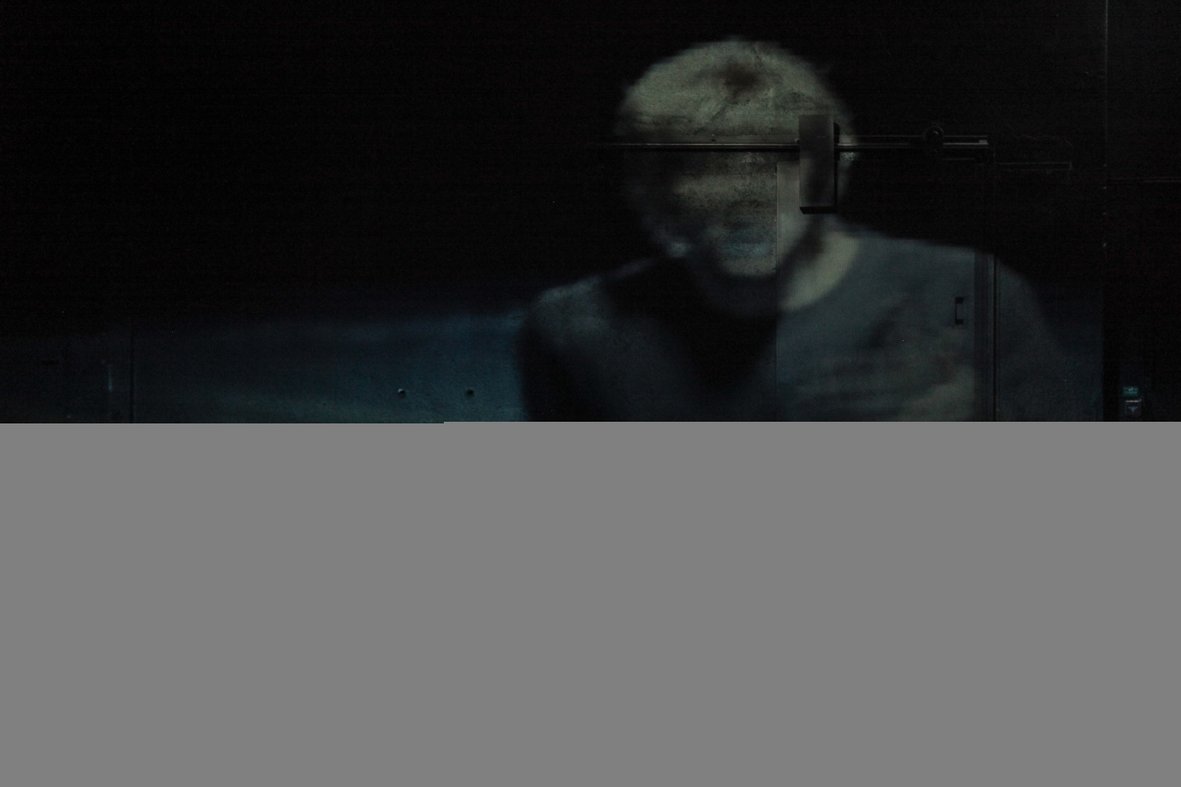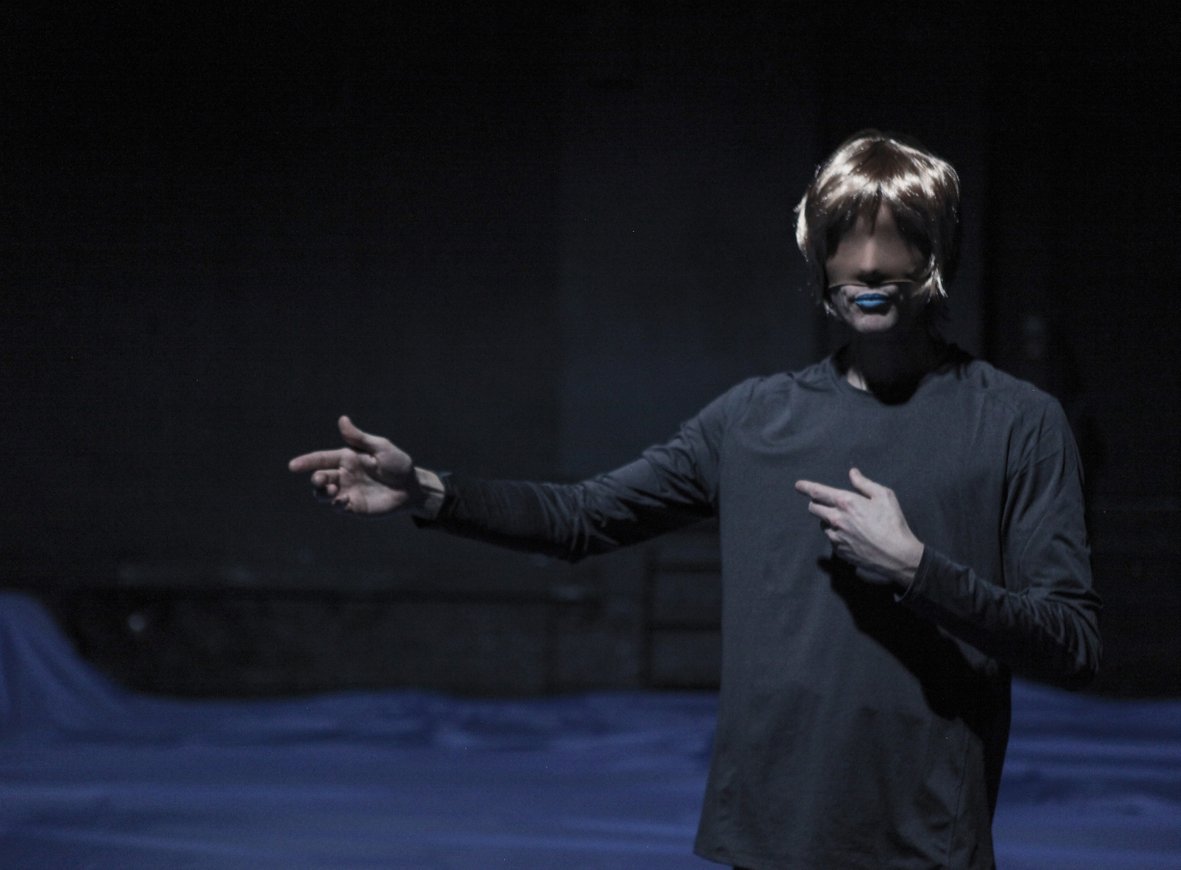

Choreography Mirko Guido
Set / Light / Video / Photography Jens Sethzman
This Is Fiction
Text by Håkan Nilsson
This is fiction. This stage makes it into fiction. This script too. Entering a black box is to agree to enter the realm of fiction and part of the contract is, as already Bertold Brecht reminded us of, to forget that it is. To pretend that it is real while understanding it isn´t. And yet, isn´t this a description that increasingly often also fits life outside the black box? When U.S. Counselor to the President Kellyanne Conway on January 22, 2017, in media (fiction) tries to cover up a blatant lie by describing it as “alternative facts”, aren´t we then already in the realm of fiction, just pretending that we are not? Indeed, “facts just twist the truth around”, as David Byrne sang some thirty years ago. This is fiction. All of it.
However, this feeling of living in a fictitious reality is only relevant to choreographer Mirko Guido as a framework. The black box creates fiction, but it isn´t the black box as an apparatus that is in his focus. Unlike many artists who have been intrigued by the simulacra of for instance Jean Baudrillard, Guido is more interested in investigating what “fiction” means on a more personal level. You are fiction too.
But before we go into that, there is another aspect of the claim “this is fiction” that is highly relevant for the way Mirko Guido thinks and works. “This” points to the fact that we are witnessing a whole, a totality. All the elements the beholder is about to see are part of the same fiction and they exist on an equal condition. I understand this as a tonic chord for “This is fiction, you are fiction too” and I guess that someone would get lost if s/he didn’t pay attention to it. Because it isn´t about a dancer on a stage. It is about a dancer and a stage. In fact, Guido tries to make this statement evident already from the beginning. When the audience enters the black box, they are met by a blue balloon-shaped object that seems to be in the process of getting inflated, making a snorting sound as the air is pumped into it. The stage literary takes up the space, leaving the dancer/actor in a corner. It is a solo, but then again, it really isn´t. Here Guido is picking up strategies more commonly used in visual arts, where any object can be of same relevance as the person depicted. In a seminal study of 17th-century Dutch art, Svetlana Alpers distinguish between two modes of representation. The narrative mode, that has been the dominant one since Italian renaissance, and the descriptive one, introduced and elaborated in the Low lands. The same distinction could be made for stage art. Where narration organizes and subjects everything round the main character who thereby carries the story by interpreting its content through gesturing, the narrative mode would rather just point out and present the elements.
The beginning of the first scene could be understood as a reversed Tableau Vivant: it isn´t the actors that turn into a picture, it is the picture that comes “alive”. Then, when entering the stage, the dancer is moving through the semi-inflated scenography while, seemingly, rehearsing – or perhaps tries to remember – certain movements. With the face covered with a veil/stocking, carrying a wig and lipstick in the same blue as the stage, the gender of the character remains ambiguous, although the body indicates a male sex. At this point, the hidden face seems to be an attempt to avoid what Gilles Deleuze and Félix Guattari famously called the “faciality” of contemporary society, where the “social production of face” performs a “deterritorialization” of the body. With face covered, not allowing for any social “mask” the body becomes a major signifier.
As air no longer is pumped into the stage, it slowly and quietly settles down. The audience is instead made aware of other impressions, sharp light that flickers and changes, sound that seem to be layered in a cut-up collagelike manner, indicating no direction or any clear composition. Like the dancer, the sound seems to be testing combinations. It is as if the individual sound clicks, the individual bodily moves, are more than familiar, unforgettable parts of the body memory. But the original combinations seem lost. Thus, the body (and not the rehearsed moves) tries to reach out of the realm of fiction, beyond, if one likes, the movements, searching for a constant that is always already there. But as we study it, scrutinize it with our gaze, we cannot see anything else that the randomly put together movements. Fiction covers reality, because it is only fiction that is visible to us.
The idea of an existing but unattainable Real is at the core of the thinking of psychoanalyst Jacques Lacan. The real isn´t invisible because of some cover-up operation, but because it is too complex for us to grasp. We can see only parts of it and only filtered through our belief systems. Thus, the Real is not something we try to, or even desire to, unveil. On the contrary, we need to project our prejudices on reality to make sense of it. But we make sense of it based on what we have learnt. This is the double bind of the Symbolic order. You are made to learn of grammatic tools and alphabetic order. About right and wrong and about you and me. And no matter how we try to keep a critical eye, refuting the given Order, the Real is too complex for us to grasp. There are no tools for your rebellion to find outside the Symbolic order. And in all honesty. Could you, would you really want to live with all the stimuli entering unfiltered into your system? You project in order to protect.
When scene starts to deflate, the dancer slowly moves across the floor, gesturing slowly with the arms; as the sound makes various attempts to make music, and the light refuses to center any position, Mirko Guido and set designer Jens Sethzman does not only confront us with fragments, but also with the will to put the pieces together in a graspable shape. In this sense-making procedure, the act becomes a screen for the audience to project their previous knowledge on. Of course, every gesture, every sound and light can stir a memory, can be traced to something else. But this analytical attempt to position the piece in a tradition or understand the various parts only places the beholder further away from what is actually going on, on stage. This is fiction. Making sense out of something is fiction.
The dancer sits down, seemingly looking at the audience. Almost nothing happens; it gets uncomfortably calm. Then, after gesturing sitting, the dancer crawls across the floor until reaching the middle. Here, standing s/he gestures – discerptively - to the audience as if preparing, soundlessly, for a speech. After moving around in this state of rehearsing, the stage gets illuminated and the dancer moves rather rapidly to the wall at the far end of the stage. A camera gets started and the dancer, while looking away from the audience, simultaneously looks at it through a full-wall real-time projection. We now follow a transformation, as the dancer and puts ear phones, removes the wig and veil and starts to talk to the camera. Here, faciality isn’t avoided, but embraced. Not so much because we can identify an individual male, but because the way the camera literary gets into his face, and he acts, becomes fiction by exactly the social production discussed earlier.
If the projection in the first part was a metaphor for the way we project our understanding of the world onto the world, a real proception now becomes central for the piece. The actor talks to the camera as if in need of a proxy, in need of fiction, to be able to address the audience. At the same time, the way he talks and acts more gives the impression of someone talking to himself, as if talking to a mirror. For Lacan the mirror stage forms another relationship to the Symbolic order than the Real. The mirror stage is where the infant reflects him/herself into the mother, living in a symbiosis that the big Other will interrupt by his no/name by which we are inserted into the realm of rules and regulation. The mirror also allows the infant the first glimpse of itself, which paradoxically means that we can see ourselves as a whole only through a projection.
For Mirko Guido, the mirror is replaced by a camera and a projection. It is of course an image of a change the world has undergone since the writings of Lacan. In the world of faciality, cameras and projections are defining existence. It is no longer sufficient with a reflection to become, we need constant corroboration of many “others”. Faciality depends on dissemination.
The sentences the dancer utters sounds not only rehearsed, but also appropriated, as if picked up from various sources. They don’t make any claim for being “true”, on the contrary, while repeating some lies that really sounds like taken from film scripts, the dancer more reminds of someone living in a fantasy of being a famous actor. Thus, neither speech nor individuality render the dancer more real. It is all fiction, all in a mode of describing.
The mirror sage shows how difficult - impossible – it is to find an origin that can act as steady ground for the construction of a subject. Mirko Guido also remind us of that such uncertainty does not mean instability. Multiple and rehearsed identities follow us in social media, in social events and in our projected reality. As the dancer acts out his lines, the projection starts flickering. Like the sound that scours the entire piece, the image gets delayed, gets fragmented and overlayered. The image dissolves through repetition and in the end, all that is given is a pixelated projection before the dancer lies down.
Where the lack of self-identity for Lacan also constructed a need to compensate, it does something more in the work of Mirko Guido. This is fiction is indeed a statement about how things are. But, like psychoanalyst Luce Irigaray, Guido doesn’t point to a lack, but to an essence. The essence is that there is no essence. This is why this is fiction. And why you are fiction too.